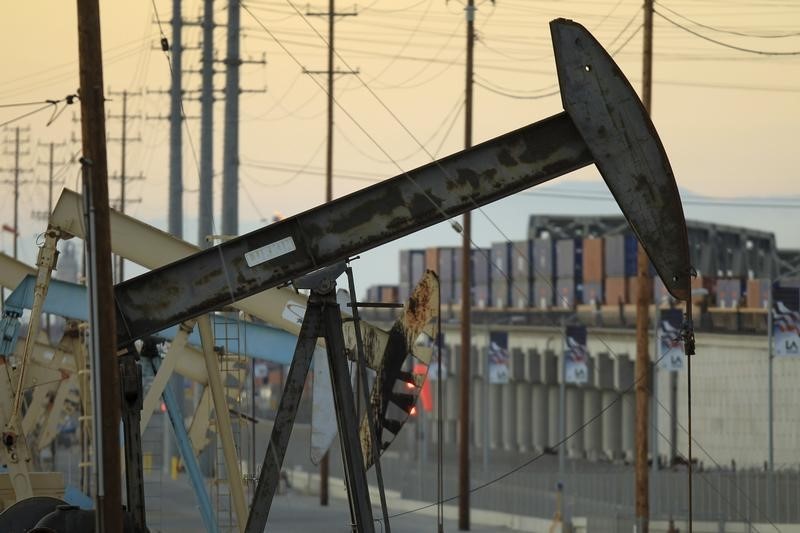(In 3rd paragraph, corrects U.S. crude settlement to say rose 12 cents, or 0.2 percent, to close at $63.49 a barrel, not rose 25 cents, or 0.4 percent, to close at $63.62 a barrel)
* Dollar pares losses on news of deal to end U.S. govt shutdown
* Restarting Libyan oil fields puts brake on rally
* Saudi comments, global growth offer some support
By Jessica Resnick-Ault
NEW YORK, Jan 22 (Reuters) - Oil settled higher on Monday after dollar fluctuations and the restart of some Libyan oil fields caused the market to vacillate, with prices testing lower before rallying to levels just below three-year highs.
Brent crude LCOc1 futures for March delivery settled up 42 cents, or 0.6 percent, at $69.03 a barrel, after earlier rallying to $69.51. Brent on Jan. 15 had hit $70.37, the highest since December 2014.
U.S. crude CLc1 rose 12 cents, or 0.2 percent, to close at $63.49 a barrel.
The dollar index .DXY , which measures the greenback against six rival currencies retreated to near a three-year low, but pared losses as the U.S. government shutdown appeared poised to end. The index drifted lower again late in the session, weighing on crude a second time. USD/
Traditionally, a weaker dollar spurs buying of dollar-based commodities as they become cheaper for holders of other currencies. However, buying as the dollar weakens has been less frequent in recent months.
"That trade has been out of vogue a bit, but we're reaching a level now where that is going to start to kick in," said John Kilduff at Again Capital in New York.
Earlier in the day, resumption of output from Libya's As-Sarah fields weighed on the market.
"The downside might be limited but last week's highs are unlikely to be penetrated unless there is a significant bullish change on the supply front," PVM analyst Tamas Varga said in a report.
Production at As-Sarah resumed on Sunday and was expected to add 55,000 barrels per day by Monday. is particularly sensitive to changes in output from Libya, as most Libyan crude is priced against Brent.
Supportive to the market were comments from top exporter Saudi Arabia that the Organization of the Petroleum Exporting Countries and other producers would continue to cooperate on oil output cuts beyond 2018. The deal began in January 2017.
Saudi Energy Minister Khalid al-Falih said market rebalancing might not occur until 2019, suggesting it would take longer than OPEC had previously indicated. economic growth was also helping prices by driving up demand.
"Global growth has become synchronised and accelerated above trend," U.S. bank Morgan Stanley (NYSE:MS) said in a note.
<^^^^^^^^^^^^^^^^^^^^^^^^^^^^^^^^^^^^^^^^^^^^^^^^^^^^^^^^^^^ GRAPHIC: U.S. oil rig count
http://reut.rs/2DnRUtw As oil hits $70, warning lights flash up in Asia
(Additional reporting Ahmad Ghaddar, Julia Payne and Alex Lawler in London and Henning Gloystein in Singapore; Editing by Marguerita Choy and Edmund Blair)
